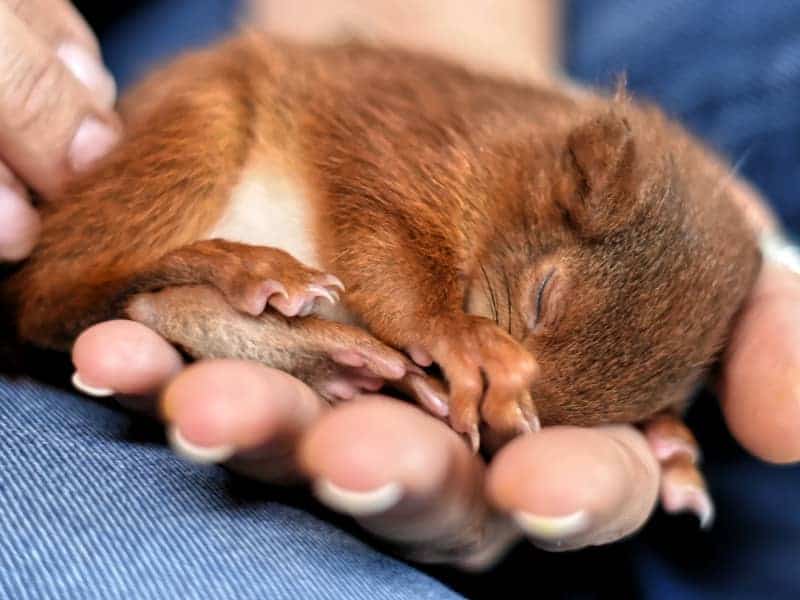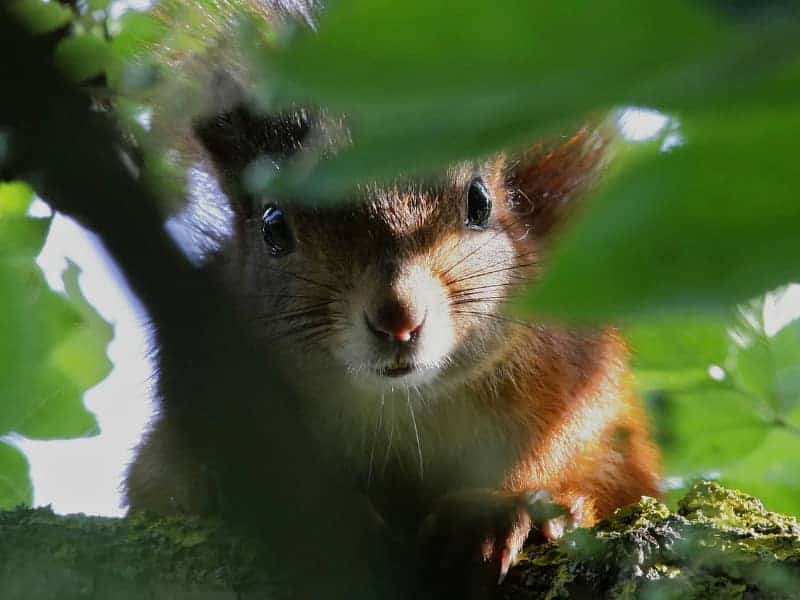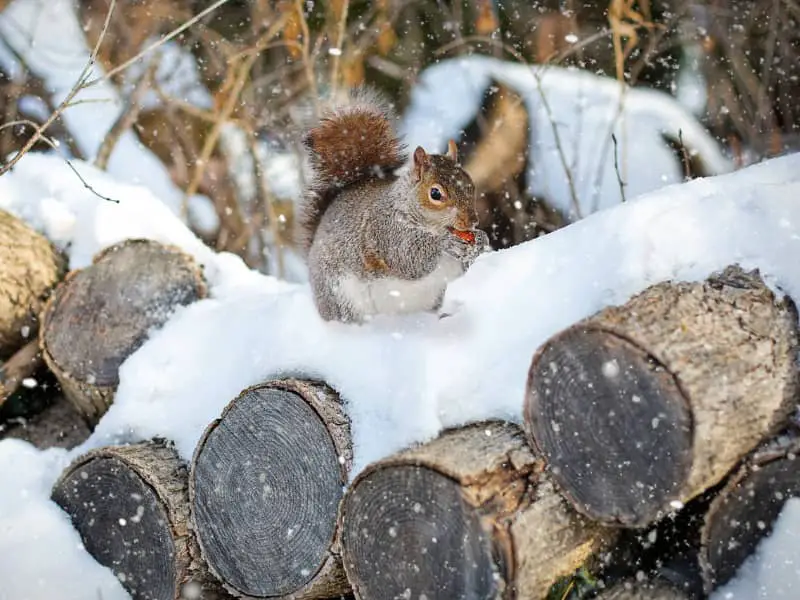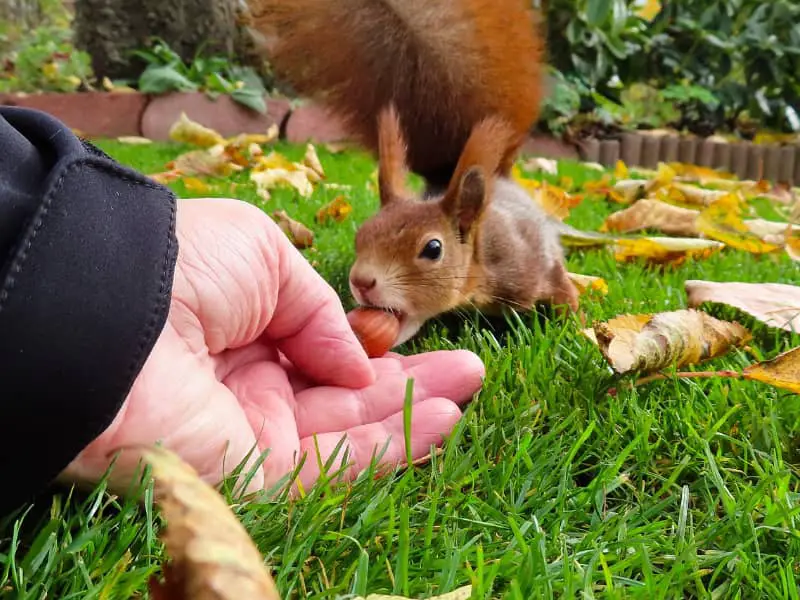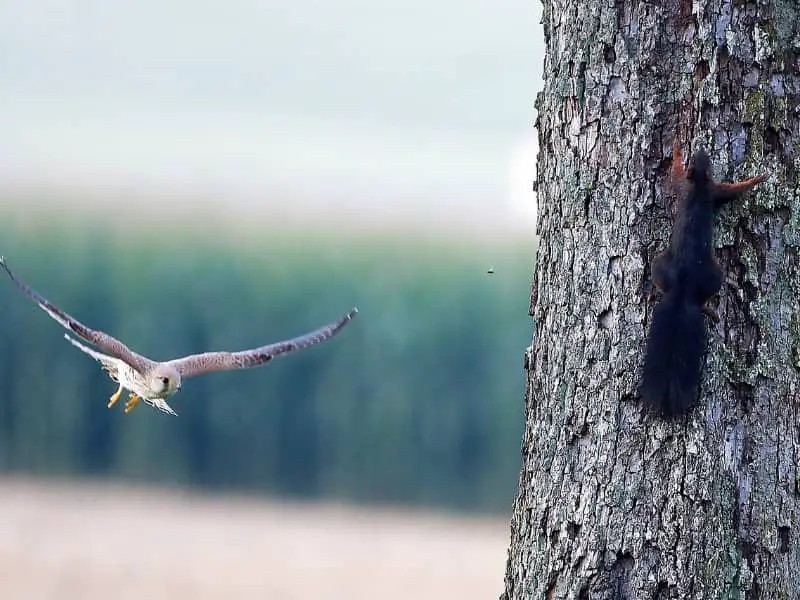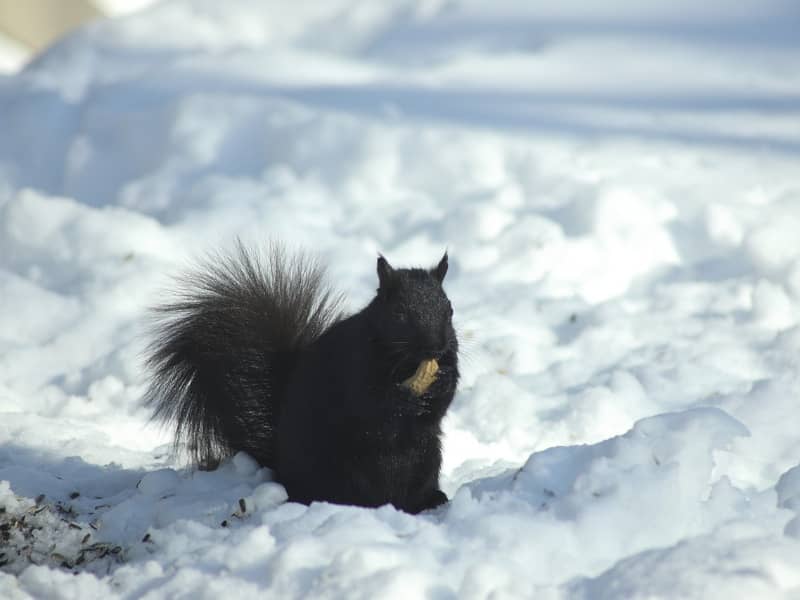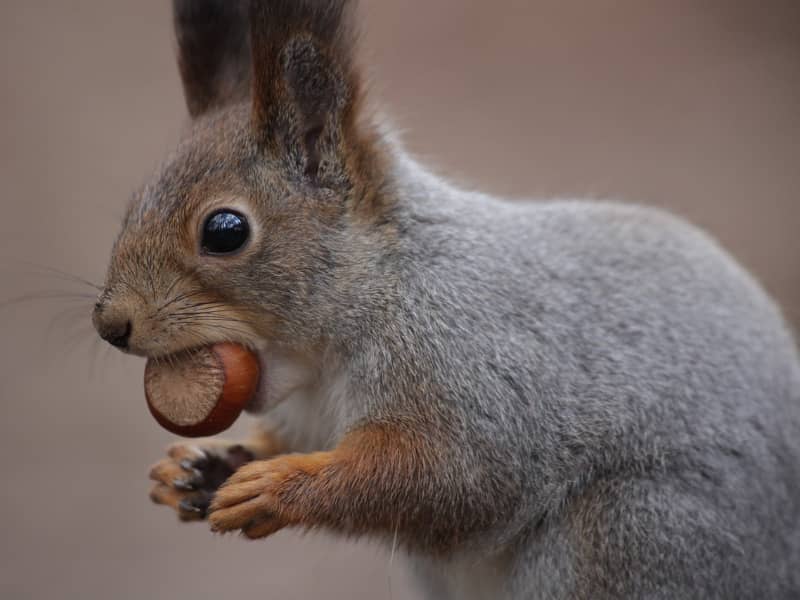
What do squirrels eat?
The question of what squirrels eat is easy to answer. The animals belong to the omnivores, which adapt their diet to the season. This includes both plant and animal food. You can learn much more about the squirrel's diet in the article.
What squirrels eat in nature
These lively creatures feed primarily on energy-rich seeds and fruits. In addition to chestnuts and other nuts, the seeds of beech, oak, pine, spruce and maple are popular with squirrels. Also on the menu are various buds, flowers, mushrooms and galls. Even animal food is not spurned. As predators, squirrels prey on worms, insects, bird eggs, young birds, snails and larvae.
The needs of a squirrel
The little climbers have specific needs that you should know.
- Per day they need about 100 spruce cones - this corresponds to an average amount of 80-100 g.
- In winter, the squirrel eats about 35 g per day.
- It has a very high water requirement.
How does the squirrel eat?
With its front paws it holds its food and tears off the cover scales of the spruce cones with its teeth. This is how it gets to the contents of the spruce cone. The squirrel can even open walnuts or hazelnuts within seconds. It gnaws a hole in the shell with its incisors. It then pries open the shell with its teeth to get at the nut. The young squirrels learn this from the adults.
What do squirrels eat in winter?
So that the squirrel does not starve in the winter, it must build up supplies early. To do this, it likes to collect seeds, which it buries directly at the roots of trees. Sometimes the seeds are also pushed under protruding bark or between branch forks. In order for the squirrel to find these supplies again, it uses its fine sense of smell. Seeds that are not found begin to grow the following year. Thus, the squirrel is an important part of forest regeneration and renewal.
This is how the European squirrel behaves
- In deciduous forests it does not find food in winter. Therefore, the stockpiles are very important for survival.
- In mixed forests, the buried seeds ensure the survival of animals.
- In coniferous forests, there are enough cones in the winter so there is no need to stockpile.
What do squirrels eat in the summer?
As soon as the snow melts in spring, the squirrel goes hunting for protein-rich worms and insects. In the breeding season of the birds you will meet the Squirrels often as nest predators an. However, the squirrel does not pose a threat to native songbirds. Indispensable as a food source are trees. There squirrels eat not only nuts, but also young shoots, buds and the bark in the spring.
Does it make sense to feed a squirrel?
In nature squirrels find enough food, so you do not have to feed extra. Of course, you can help individual squirrels. This is not only good for your soul, but is also a vivid nature experience for children. So the squirrel can be observed from close up.
What are you allowed to offer a squirrel as food?
Even with very simple means, you can lure the squirrel onto the balcony or your terrace. Especially the little foundlings are dependent on your help. However, if you discover a sick, malnourished or injured squirrel, you should seek expert advice.
Automatic feeders have proven their worth for offering food both in summer and winter. You can look through a window. The flap on the feeder protects the food from uninvited guests. Squirrels prefer to get the peanuts from the feeder by opening the flap independently with their paws.
This is how you feed correctly:
- Under no circumstances set up a ground level feeding station.
- To avoid competition, it makes sense to have several feeding stations in the tree.
- Clean feeding stations regularly to prevent pathogens from multiplying.
- Offer unshelled hazelnuts and walnuts, carrots, apples, grapes and sunflower seeds.
- Refrain from using bread and leftovers because of the risk of mold.
- For young animals you should offer peeled nuts.
Squirrels in any case should not be given milk. This leads to diarrhea and in the worst case to the death of the animal.
Author

-
Garden animal - A life with nature
Welcome to my animal blog! My name is Dirk and I am happy to take you on my journey through the fascinating world of animals and gardening.
Born 54 years ago, I have had an insatiable curiosity for the animal world around me since childhood. Although I have moved professionally in other industries, my true passion has always been animals and nature. It is remarkable how a small garden has become such an important part of my life.
Many of my fondest memories are associated with the animals that share our home. Whether it's the curious squirrels that scurry across the trees in the morning, the colorful variety of birds that visit our feeders, or the busy bees and butterflies that pollinate our flowers, every moment with them is invaluable to me.
This blog is my contribution to share my experiences, discoveries and insights with like-minded people. Here I will share stories of unforgettable encounters with animals, give tips on gardening and creating wildlife-friendly habitats, and take you on my journeys through nature.
Thank you so much for being here!
Cordial,
Dirk aka garden animal
Last posts
- 27. February 2024PetsVeganes Hundefutter – Grün und Gesund?
- 18. January 2024ChickensOregano für Hühner
- November 27, 2023HamsterDiurnal hamsters
- November 24, 2023HamsterHamster hammock

